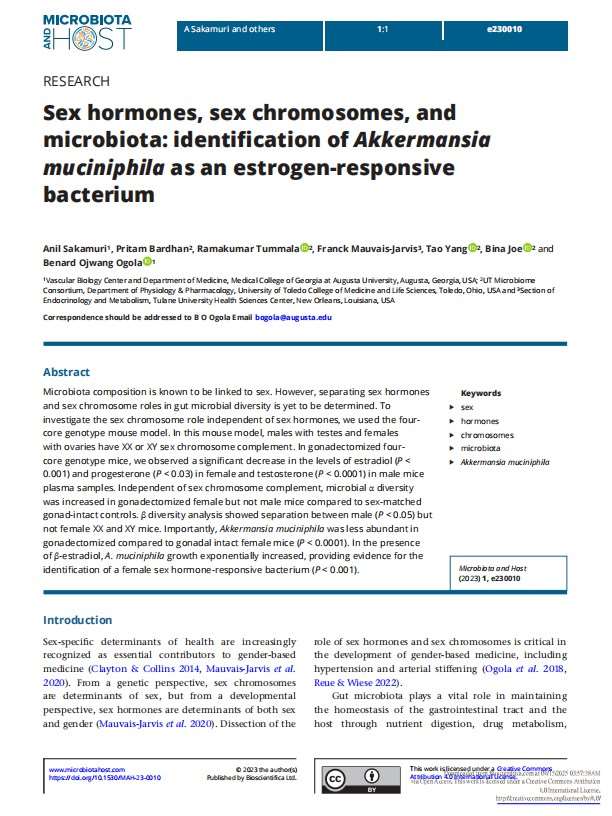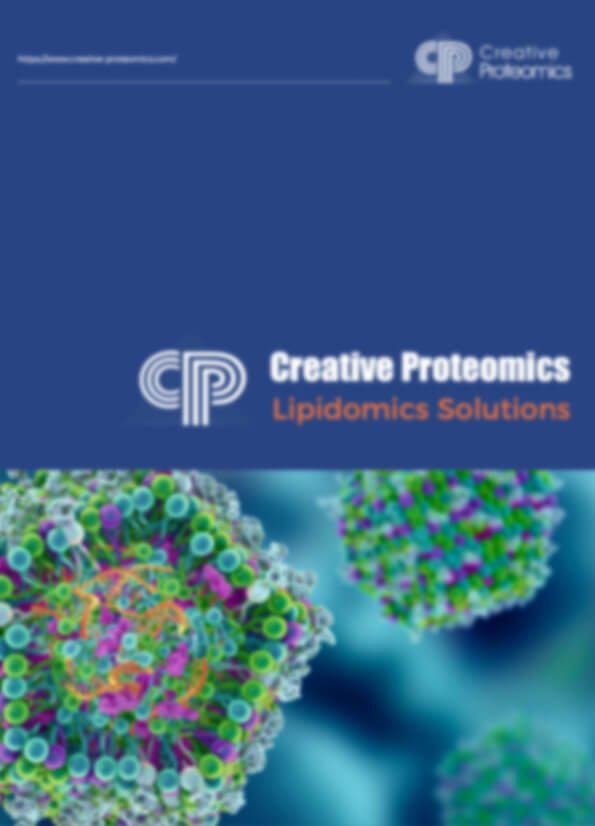Comprehensive Steroid Hormone Analysis with LC-MS/MS
Creative Proteomics offers high-precision steroid hormone analysis using LC-MS/MS (liquid chromatography-tandem mass spectrometry) on the QSight 420MD triple quadrupole system. Our advanced method enables:
- Simultaneous detection of 38 steroid hormones in a single run
- High specificity and sensitivity, even for low-abundance hormones
- Significant reduction in analysis time, optimizing research efficiency
With broad coverage of the steroid hormone metabolic pathway, our approach provides fast, accurate, and comprehensive insights for endocrine disease diagnostics.
Submit Your Request Now
×- Why Use LC-MS/MS
- Services Details
- Advantages
- Platform
- Workflow
- Case Study
- Publication
What Are Steroid Hormones?
Steroid hormones, derived from cholesterol, play a crucial role in regulating key biological functions. Produced primarily in the adrenal glands and gonads, they influence:
- Metabolism – Regulating glucose, protein, and lipid levels
- Reproductive health – Controlling sexual function and fertility
- Growth and development – Supporting physiological maturation
- Immune response – Modulating inflammation and defense mechanisms
- Skin conditions – Treating dermatological disorders
Steroid hormones fall into five main categories: mineralocorticoids, glucocorticoids, androgens, estrogens, and progestogens.
Why Use LC-MS/MS for Steroid Hormone Quantification?
Steroid hormones are present in low concentrations, have similar structures, and exist in complex metabolic pathways. LC-MS/MS surpasses traditional immunoassays by offering:
- Ultra-low detection limits (ng-pg levels) for superior sensitivity
- Multiplex analysis – Measure multiple hormones in one injection
- High specificity – Avoids cross-reactivity with structurally similar compounds
- Minimal protein interference – Advanced sample prep ensures accurate results
Regulatory Shift Toward LC-MS/MS
In 2013, the Endocrine Society issued a statement in The Journal of Clinical Endocrinology & Metabolism, announcing that from 2015 onward, LC-MS/MS-based hormone testing would be preferred for clinical research due to its accuracy over immunoassays.
LC-MS/MS vs. Traditional Immunoassays
| Feature | Immunoassay | LC-MS/MS |
|---|---|---|
| Number of Analytes per Run | Single hormone | Multiple hormones |
| Sensitivity | µg-ng range | ng-pg range |
| Stability (CV%) | 13-32% | <2% |
| Protein Binding Interference | High | Minimal (pre-treatment removes proteins) |
| Cross-Reactivity | Common | Highly specific |
Creative Proteomics' LC-MS/MS Steroid Hormone Analysis
We provide high-throughput steroid hormone quantification covering 38 key hormones:
- Mineralocorticoids – Aldosterone, corticosterone
- Glucocorticoids – Cortisol, cortisone
- Androgens – Testosterone, androstenedione
- Estrogens – Estradiol, estrone
- Progestogens – Progesterone, 17-OHP
Extensive Steroid Hormone Coverage
Our LC-MS/MS analysis detects a wide range of steroid hormone metabolites, including:
Compounds
| ∆4 Steroids could monitored in This Service | ||
|---|---|---|
| Aldosterone | Androsterone | Androstenedione |
| Corticosterone | Cortisol | Cortisone |
| 11-deoxycortisol | 11-deoxycorticosterone | Estradiol |
| Estrone | 17-OHP | Progesterone |
| Testosterone | Dihydrotestosterone | 11-Hydroxyandrostenedione |
| 11-OHP | 11-OHP | 11-Ketoandrostenedione |
| 11-Ketoprogesterone | 11-Ketotestosterone | 18-Hydroxycortisol |
| 18-Oxocortiso | 21-Deoxycortisol | |
| ∆5 Steroids could monitored in This Service | ||
| Pregnenolone | 17-hydroxypregnenolone | Allopregnenolone |
| 5α-pregnane-3α,17α-diol-20-one (pdiol) | Dehydroepiandrosterone | 5-Androstenediol |
| 5α-Reduced could monitored in This Service | ||
| Dihydrotestosterone | Androsterone | |
| Conjugated steroids sulfates could monitored in This Service | ||
| Pregnenolone sulfate | 17-hydroxypregnenolone sulfate | Dehydroepiandrostenedione-sulfate |
| Androsterone sulfate | Etiocholane sulfate | Androst-5-ene-diol sulfate |
Chemical Class
Steroid hormones,
sulfates and glucoronides of steroid hormones
Metabolic Pathways
Our service covers key steroid metabolic pathways, including:
Steroid synthesis,
steroid hormone primary and secondary metabolism,
cholesterol metabolism.
Key Advantages of Our Steroid Hormone Analysis Platform
Comprehensive metabolic profiling – Covers entire steroid hormone pathways
Superior sensitivity – Detects testosterone and androstenedione at pg/ml levels
Minimal sample preparation – No need for costly solid-phase extraction
High-throughput analysis – Screens 14+ hormones in minutes
Analytical Platform & Technology


- UPLC-MS for steroid hormone quantification
- UPLC-MRM/MS for precise measurement
- ACQUITY UPLC I-Class PLUS System + Xevo TQ-S micro Mass Spectrometer
For fast, accurate, and high-throughput steroid hormone analysis, trust Creative Proteomics to deliver industry-leading results.
Workflow of Steroid Hormones Profiling by LC-MS/MS
 The workflow of the LC-MS/MS method for steroid profiling. (Feng Wang et al,.2024)
The workflow of the LC-MS/MS method for steroid profiling. (Feng Wang et al,.2024)
Ordering Procedure:

With integrated set of separation, characterization, identification and quantification systems featured with excellent robustness & reproducibility, high and ultra-sensitivity, Creative Proteomics provides reliable, rapid and cost-effective Lipidomics services.
Case Study: Client Success Stories

Sex hormones, sex chromosomes, and microbiota: identification of Akkermansia muciniphila as an estrogen-responsive bacterium
DOI: 10.1530/mah-23-0010
- Background
- Methods
- Results
- Conclusion
Emerging evidence highlights the interplay between sex hormones, gut microbiota, and metabolic health. Estrogen, a key sex hormone, is known to modulate immune responses and metabolic pathways, but its interaction with specific gut bacteria remains understudied. Akkermansia muciniphila (A. muciniphila), a mucin-degrading bacterium residing in the intestinal mucus layer, has been linked to improved metabolic health, reduced inflammation, and enhanced gut barrier function. However, its responsiveness to hormonal fluctuations, particularly estrogen, was unexplored. This study aimed to investigate whether A. muciniphila abundance is influenced by estrogen levels and to elucidate the mechanistic link between sex hormones and microbial composition.
Client Focus: The study leveraged our quantitative measurement of steroids service to precisely analyze estrogen and other sex hormone levels in serum and fecal samples, enabling a robust correlation between hormonal profiles and microbial dynamics.
Cohorts: Female mice (wild-type and ovariectomized) and human postmenopausal women (n=50) were included. Estrogen levels were modulated through exogenous supplementation or natural depletion.
Microbiota Analysis: 16S rRNA sequencing and qPCR were used to quantify A. muciniphila abundance in fecal samples.
Steroid Quantification: Our service provided high-sensitivity LC-MS/MS to measure estradiol, progesterone, and testosterone levels in serum and fecal extracts. This allowed precise tracking of hormonal changes and their correlation with microbial shifts.
Functional Assays:
In vitro cultures of A. muciniphila were exposed to varying estrogen concentrations to assess growth kinetics and gene expression (e.g., mucinase and SCFA-production genes).
Gut barrier integrity was evaluated via tight junction protein (ZO-1, occludin) expression and LPS translocation assays.
Estrogen-Dependent Enrichment of A. muciniphila:
In estrogen-supplemented mice and postmenopausal women, A. muciniphila abundance increased by 2.5-fold compared to controls (p<0.01). This correlated with elevated serum estradiol levels measured via our steroid quantification service .
Ovariectomized mice showed a 60% reduction in A. muciniphila, which was reversed with estrogen replacement therapy (ERT).
Mechanistic Insights:
Estrogen enhanced A. muciniphila's mucinolytic activity, increasing short-chain fatty acid (SCFA) production (acetate: +40%, propionate: +25%), which strengthened gut barrier function.
Hormonal profiling revealed a positive correlation between fecal estradiol metabolites (quantified via LC-MS/MS) and A. muciniphila-derived SCFAs (r=0.72, p<0.001).
Clinical Relevance:
Postmenopausal women with higher baseline estrogen (measured pre-study) exhibited better glucose tolerance and lower systemic inflammation, linked to A. muciniphila enrichment.
Our steroid quantification data identified a subset of patients with "estrogen-resistant" microbiota, guiding personalized ERT strategies.
 Plasma steroid analysis of gonadal intact and gonadectomized mice.
Plasma steroid analysis of gonadal intact and gonadectomized mice.
This study establishes A. muciniphila as an estrogen-responsive bacterium, highlighting the role of sex hormones in shaping gut microbiota. The integration of our quantitative steroid measurement service provided critical insights into hormonal-microbial crosstalk, offering a foundation for therapies targeting estrogen pathways to modulate A. muciniphila and improve metabolic health.
Publications
Here are some publications from our clients:

- Sex hormones, sex chromosomes, and microbiota: identification of Akkermansia muciniphila as an estrogen-responsive bacterium. 2023. https://doi.org/10.1530/MAH-23-0010
- Function and regulation of a steroidogenic CYP450 enzyme in the mitochondrion of Toxoplasma gondii.2023. https://doi.org/10.1371/journal.ppat.1011566
References
- Corona, G., Goulis, D. G., Huhtaniemi, I., et al. (2020). European Academy of Andrology (EAA) guidelines on investigation, treatment and monitoring of functional hypogonadism in males: Endorsing organization: European Society of Endocrinology. Andrology, 8(5), 970-987. DOI: 10.1111/andr.12770
- Kanakis, G. A., Nordkap, L., Bang, A. K., et al. (2019). EAA clinical practice guidelines—gynecomastia evaluation and management. Andrology, 7(6), 778-793. DOI: 10.1111/andr.12636
- Wang, Z., Wang, H., Peng, Y., et al. (2020). A liquid chromatography-tandem mass spectrometry (LC-MS/MS)-based assay to profile 20 plasma steroids in endocrine disorders. Clinical Chemistry and Laboratory Medicine, 58(9). https://doi.org/10.1515/cclm-2019-0869
- Ouweland, J., & Kema, I. P. (2012). The role of liquid chromatography-tandem mass spectrometry in the clinical laboratory. Journal of Chromatography B, 883-884, 18-32. DOI: 10.1016/j.jchromb.2011.11.044












